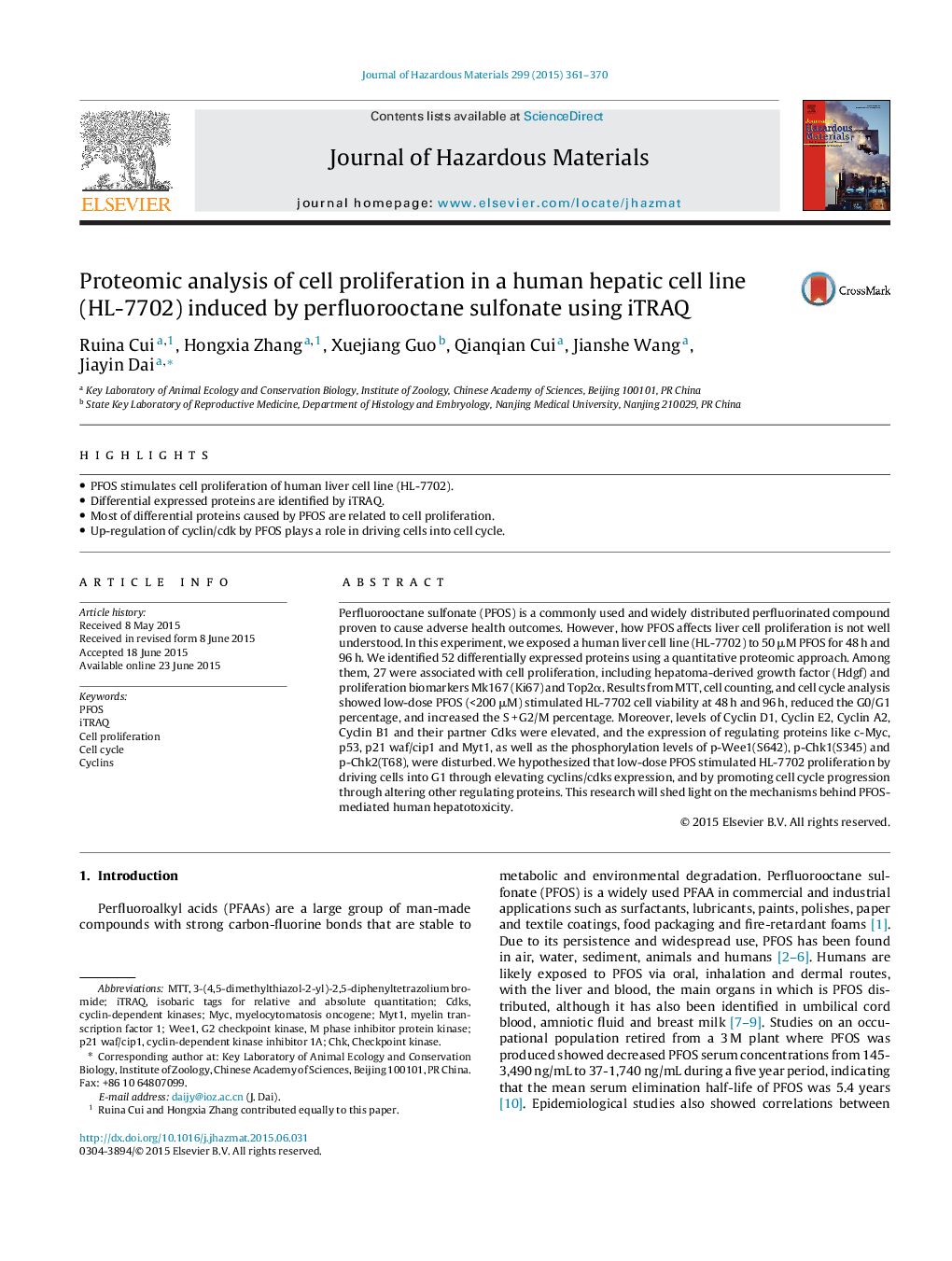| Article ID | Journal | Published Year | Pages | File Type |
|---|---|---|---|---|
| 575933 | Journal of Hazardous Materials | 2015 | 10 Pages |
Abstract
Perfluorooctane sulfonate (PFOS) is a commonly used and widely distributed perfluorinated compound proven to cause adverse health outcomes. However, how PFOS affects liver cell proliferation is not well understood. In this experiment, we exposed a human liver cell line (HL-7702) to 50 μM PFOS for 48 h and 96 h. We identified 52 differentially expressed proteins using a quantitative proteomic approach. Among them, 27 were associated with cell proliferation, including hepatoma-derived growth factor (Hdgf) and proliferation biomarkers Mk167 (Ki67) and Top2α. Results from MTT, cell counting, and cell cycle analysis showed low-dose PFOS (<200 μM) stimulated HL-7702 cell viability at 48 h and 96 h, reduced the G0/G1 percentage, and increased the S + G2/M percentage. Moreover, levels of Cyclin D1, Cyclin E2, Cyclin A2, Cyclin B1 and their partner Cdks were elevated, and the expression of regulating proteins like c-Myc, p53, p21 waf/cip1 and Myt1, as well as the phosphorylation levels of p-Wee1(S642), p-Chk1(S345) and p-Chk2(T68), were disturbed. We hypothesized that low-dose PFOS stimulated HL-7702 proliferation by driving cells into G1 through elevating cyclins/cdks expression, and by promoting cell cycle progression through altering other regulating proteins. This research will shed light on the mechanisms behind PFOS-mediated human hepatotoxicity.
Keywords
myelocytomatosis oncogenemyelin transcription factor 1PFOSMYCITRAQWee13-(4,5-dimethylthiazol-2-yl)-2,5-diphenyltetrazolium bromideCDKsMTTcheckpoint kinaseisobaric tags for relative and absolute quantitationCell proliferationCyclinscyclin-dependent kinase inhibitor 1AMyt1ChkCell cyclecyclin-dependent kinases
Related Topics
Physical Sciences and Engineering
Chemical Engineering
Chemical Health and Safety
Authors
Ruina Cui, Hongxia Zhang, Xuejiang Guo, Qianqian Cui, Jianshe Wang, Jiayin Dai,
